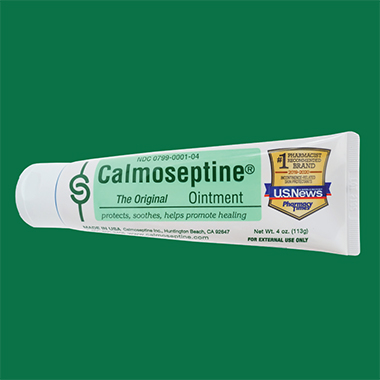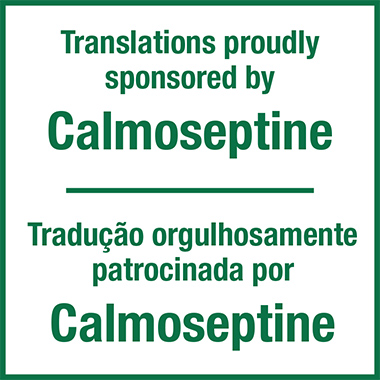Volume 43 Number 2
Complexity of care: Mitigating insidious infection
Jenny Prentice
For referencing Prentice J. Complexity of care: Mitigating insidious infection. WCET® Journal 2023;43(2):7
DOI https://doi.org/10.33235/wcet.43.2. 7
To add to our President and President Elect’s message and in acknowledging the ongoing influence of Florence Nightingale on modern medicine and nursing Nightingale not only expounded the benefits of ‘best care’ she recounted “Wise and humane management of the patient is the best safeguard against infection”1. Further, Ayello on her reflections of Nightingale’s principles for practice reiterates Nightingale’s belief in the importance of skin health whereby, “in almost all diseases, the function of the skin is, more or less disordered; and in many most important diseases natures relives herself almost entirely by the skin”2.
There are many variables that contribute to the development of wound infection; the person, the type and origin of the wound, environmental factors, whether the wound is acute or chronic as well as the specific characteristics of causative organisms and what treatments may be available to prevent or treat infection3.
A common theme within all articles presented here is infection, either as a primary cause of skin infection or a secondary complication of wound healing. The challenges of diagnosing and differentiating between superficial and deep infection in the sternal wounds of paediatric cardiac surgical patients and implementation of wound management pathways and staff education in conjunction with early intervention strategies to manage these wounds are described by Kumar et al.
Shukalek et al use case histories to demonstrate the complexity of diagnosing cellulitis in their third essay on skin and soft tissue infections and other conditions that may mimic cellulitis. The clinical manifestations, pathogenesis, microbiology, differential diagnosis, and prevention of cellulitis are discussed.
The use of negative pressure wound therapy (NPWT)to manage severe infection in the presence of retracted stomas is described by Cwaliński et al. They report on seven patients where severe peristomal infection failed to respond to conventional local treatment using ostomy appliances or specialist dressings and were consequently and successfully treated with NPWT preventing the need for further corrective stoma surgery.
The historical and current use of sugar and variations of dressings for treating wound infection and stimulating wound healing in resource limited settings is outlined by Haesler. Specifically, how granular white sugar is thought to work in reducing wound exudate, facilitate autolytic and mechanical debridement and lessening peri-wound oedema. Sugar’s ability to inhibit bacterial growth is also discussed.
In combatting infection, as described in the above articles, are that an interprofessional and holistic approach are two key elements essential to the prevention, assessment, diagnoses and treatment of infection.
It is always a delight to recognise those who have contributed to the advancement of medical or nursing practice in the same way as we continue to acknowledge Florence Nightingale. On behalf of the Editorial Board I would like to offer our congratulations to Dr Elizabeth A Ayello, PhD, MS, BSN, ETN, RN, CWON, MAPWCA, FAAN for being the recipient of two prestigious awards: the NPIAP JoAnn Maklebust Lifetime Achievement Award for her contribution to the prevention and treatment of pressure injuries and the International Academy of Nursing Editors’ Margaret Comerford Freda Award for Editorial Leadership in Nursing Publication. These awards are exceptionally well-deserved accolades. Dr Ayello’s advice will continue to resonant with current and new practitioners for many years to come.
Best wishes to you all, Jenny.
Complexidade dos cuidados: Mitigando a infeção insidiosa
Jenny Prentice
DOI: https://doi.org/10.33235/wcet.43.2. 7
Para completar a mensagem do nosso Presidente e do Presidente eleito e reconhecendo a influência contínua de Florence Nightingale na medicina e enfermagem modernas, Nightingale não só expôs os benefícios dos "melhores cuidados", como também reforçou que "A gestão sábia e humana do paciente é a melhor salvaguarda contra a infeção "1. Além disso, Ayello, nas suas reflexões sobre os princípios de Nightingale sobre a prática, reitera a crença de Nightingale na importância da saúde da pele, segundo a qual "em quase todas as doenças, a função da pele está, mais ou menos, desordenada; e em muitas das doenças mais importantes, a natureza revive-se quase inteiramente através da pele "2.
Existem muitas variáveis que contribuem para o desenvolvimento da infeção de uma ferida; a pessoa, o tipo e a origem da ferida, os fatores ambientais, o facto de a ferida ser aguda ou crónica, assim como as características específicas dos organismos causadores e os tratamentos disponíveis para prevenir ou tratar a infecção3.
Um tema comum a todos os artigos aqui apresentados é a infeção, seja como causa primária da infeção da pele, ou como complicação secundária da cicatrização da ferida. Os desafios do diagnóstico e da diferenciação entre infeção superficial e profunda nas feridas esternais de pacientes pediátricos submetidos a cirurgia cardíaca, a implementação de metodologias de gestão de feridas e a formação do pessoal, em conjunto com estratégias de intervenção precoce para gerir estas feridas, são descritos por Kumar et al.
Shukalek et al utilizam histórias de casos para demonstrar a complexidade do diagnóstico de celulite no seu terceiro ensaio sobre infeções da pele e tecidos moles e outras condições que podem mimetizar a celulite. São discutidas as manifestações clínicas, a patogénese, a microbiologia, o diagnóstico diferencial e a prevenção da celulite.
A utilização da terapia de feridas por pressão negativa (NPWT) para controlar a infeção grave na presença de estomas retraídos é descrita por Cwaliński et al. É relatado o caso de sete pacientes em que uma infeção periestomal grave não respondeu ao tratamento local convencional com aparelhos de ostomia ou com pensos especializados e que, consequentemente, foram tratados com sucesso com NPWT, evitando a necessidade de uma nova cirurgia de correção do estoma.
A utilização histórica e atual do açúcar e das suas variações em pensos para tratamento da infeção de feridas e estimular a cicatrização de feridas em ambientes com recursos limitados é descrita por Haesler. Especificamente, como se considera que o açúcar branco granulado atua na redução do exsudado da ferida, facilita o seu desbridamento autolítico e mecânico e diminui o edema peri-ferida. A capacidade do açúcar para inibir o crescimento bacteriano é também discutida.
No combate à infeção, como descrito nos artigos anteriores, uma abordagem interprofissional e holística constituem dois elementos-chave essenciais para a prevenção, avaliação, diagnóstico e tratamento da infeção.
É sempre um prazer reconhecer aqueles que contribuíram para o avanço da prática médica ou de enfermagem, da mesma forma que continuamos a reconhecer Florence Nightingale. Em nome do Conselho Editorial, gostaria de felicitar a Dra. Elizabeth A Ayello, PhD, MS, BSN, ETN, RN, CWON, MAPWCA, FAAN por ter recebido dois prestigiados prémios: o NPIAP Prémio JoAnn Maklebust pelo conjunto da sua obra pela sua contribuição para a prevenção e tratamento das lesões por pressão e o Academia Internacional de Editores de Enfermagem' Prémio Margaret Comerford Freda para Liderança Editorial em Publicações de Enfermagem. Estes prémios são elogios excecionalmente bem merecidos. Durante muitos anos os conselhos do Dr. Ayello continuarão a ter eco junto dos atuais e dos novos profissionais.
Os melhores votos para todos vós, Jenny.
Author(s)
Jenny Prentice
PhD, BN, RN, STN, FAWMA
References
- Health of houses. In: 160th Anniversary Edition Notes on Nursing: What it is, and what it is not. Eds: Florene Nightingale ; with an Introduction by Maureen Shaw Kennedy and commentaries by contemporary nursing leaders. Philadelphia, PA. Wolters Kluwer, 2020; p.21.
- Ayello EA. From Bedsores to Global Healthcare – Insights from Nightingale’s Notes on Nursing. In: 160th Anniversary Edition Notes on Nursing: What it is, and what it is not. Eds: Florene Nightingale ; with an Introduction by Maureen Shaw Kennedy and commentaries by contemporary nursing leaders. Philadelphia, PA. Wolters Kluwer, 2020; p.57.
- International Wound Infection Institute (IWII) Wound Infection in Clinical Practice. Wounds International. 2022.



